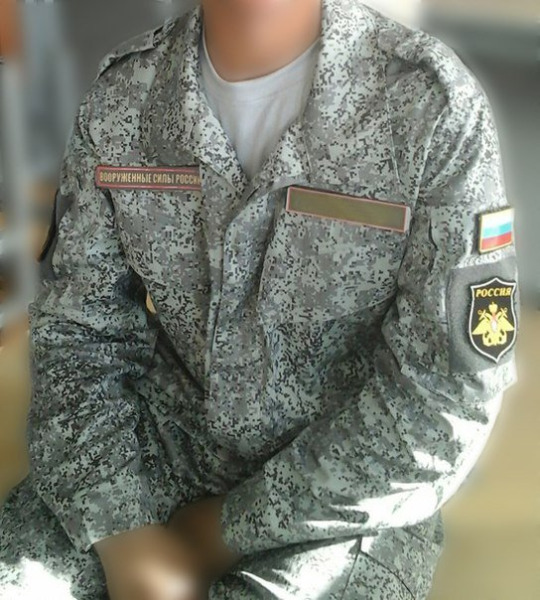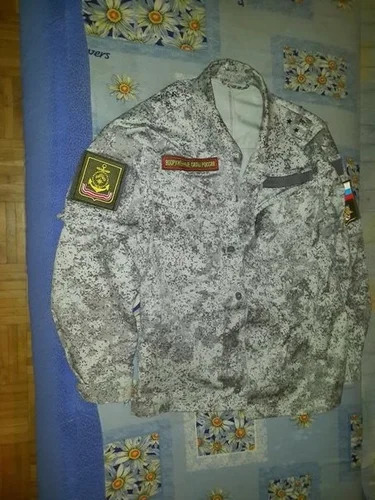#ratnik
Text

243 notes
·
View notes
Text

Bale new skin - Ratnik(Fan skin)
#Dmitri Bale#russia#russian#spetsnaz#artwork#art#illustration#traditional art#Ratnik#Россия#Солдат#call of duty#modern warfare#Fanart#COD#call of duty fanart#Bale
6 notes
·
View notes
Text
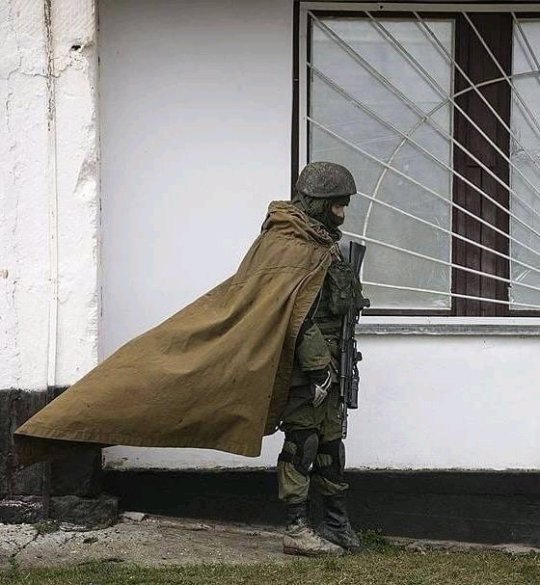
0 notes
Text






𝗡𝗼𝘃𝗶𝗰𝗮 𝗠𝗮𝗿𝗷𝗮𝗻𝗼𝘃𝗶𝗰 - ˢᵏⁱⁿⁿⁱⁿᵍ ²⁰¹⁰
There's like no content for this movie online so I'll have to post some :))
#novica marjanović#novica marjanovic#novicamarjanovic#novica#skinning 2010#skinning2010#sisanje2010#sisanje#sejtanovratnik#sheitan's warrior#shaitanswarrior#skinhead#skinning#šejtanov ratnik#šišanje#šišanje 2010#dividers#divider#green#aesthetic#moodboard
5 notes
·
View notes
Text












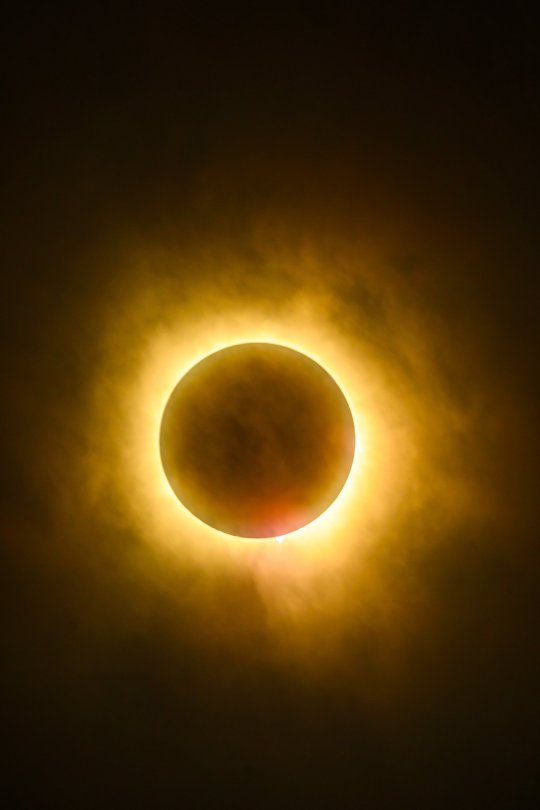
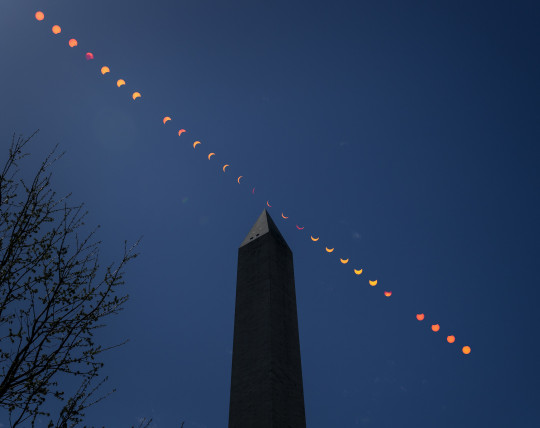

TOTAL SOLAR ECLIPSE l APRIL 2024
ALFREDO JUÁREZ | RAMI ASTRO | JOSHUA INTINI | KENDALL RUST | DERAN HALL | KUZCOKHANDA | TREVOR MAHLMANN | OTHINGSTODO | NASA | STEVEN RATNIK
#natureedit#total solar eclipse#eclipse#eclipse 2024#2024 eclipse#solar eclipse#astronomy#nasa#solar system#nessa007#kylebonallo#space#sun#moon#photography#nature photography#nature#usersource#userthing#my edit.
23K notes
·
View notes
Text
Ko je Crnogorac uhapšen u Hrvatskoj: Pobjegao danskoj policiji, sa Šarićem švercovao kokain
Foto: Kurir
U centru Zagreba u subotu je po Interpolovoj potjernici uhapšen državljanin Crne Gore.
Hrvatski mediji pišu da je uhapšen Draško Vuković, nekadašnji saradnik crnogorskog narkobosa Darka Šarića. On je priveden na osnovu Interpolove potjernice iz 2009. godine, a optužen je za dilovanje skoro 500 kilograma kokaina.
Draško Vuković bio je svjedok u postupku protiv grupe Darka Šarića i…
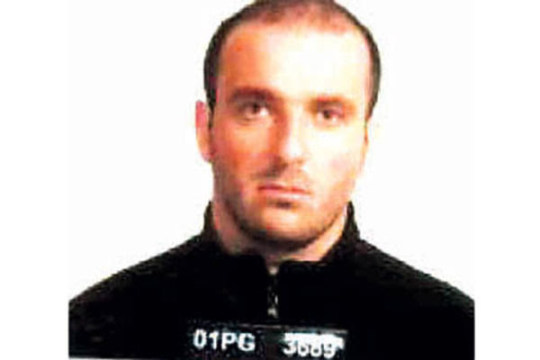
View On WordPress
#Balkanski ratnik#Crnogorac u Hrvatskoj#Darko Šarić#Draško Vuković#Draško Vuković biografija#hapšenje u Hrvatskoj#interpol#uhapšen državljanin Crne Gore
0 notes
Note
For super-powered individuals, if we assume the standard of characters being stronger, faster, more durable than normal, is there a reasonably thin enough material (i.e. not just 5 inch thick hardened steel) that a super strong individual could carry to be bullet-proof (enough), presumably in some form of plate armor where you can still be agile?
Not exactly. The problem with armor (in the context of armored vehicles) is that you can just hit them harder. Something that can stop a .50 round might not do so well against a guided explosive munition, and if that fails an artillery strike. But, against a roughly human foe, those anti-material rounds would probably get the job done.
So, let's stick with your hardened steel solution for a moment. A .50 BMG round will penetrate ~1.5 inches, but for the sake of argument let's say 2 inches. That's a pretty good defense against a sniper with an AM rifle. However, this is also used in heavy machine guns, where you're looking at a cyclic rate of ~750-850rpm. In a situation like that, your armor might hold up to a short burst, but probably will not survive multiple bursts in the same area. As is often the case, the real problem isn't the bullet with your name on it, it's the 20 or 30 buddies who wanted to swing by for a fun time.
This leads to another problem. While bullets punching holes in you is bad, your armor taking a hit can be pretty unpleasant in its own right. A .50 BMG will deliver somewhere north of 14k joules of force into the target. That's enough for the bullet to do some pretty unpleasant things to a person in the armor, even if the armor itself isn't compromised. This a large part of why there isn't any armory rated to soak a hit from one of the AM rifles. (The Russians claimed that their Ratnik-3 armor would be able to... and then it never really appeared. The claim was someone dubious to begin with, but that's a much larger, and wilder, rabbithole than you're asking about.)
For a normal person, wearing high end body armor, hits from normal combat rifles (intermediate and high power rounds) can result in broken ribs and internal hemorrhaging. It's not just about your armor being bulletproof, it's about your armor being able to effectively dissipate kinetic force as it's received. If it doesn't do that effectively, the bullets may get the job done, even if they don't manage to penetrate the body armor.
On an individual level, simply adding more armor isn't a particularly efficient solution. It makes sense to a point, but if you're already saying someone is super-humanly strong, and tough, covering them in steel plate isn't going to make them immune to harm.
Beyond that, there have been experiments with developing combat exoskeletons, to allow normal soldiers this kind of protection. The aforementioned Ratnik-3 was the Russian program, while the American project was named TALOS. TALOS was scrapped sometime before February 2019, citing technological limitations. So, this isn't a new concept.
Something I found deeply amusing is the “See also,” section on TALOS's Wikipedia page includes a link to Crysis. For those unfamiliar, Crysis was a first person shooter set in the distant future year of 2020, which would have come dangerously close to matching the intended schedule for TALOS, if the project had continued.
Powered exosuit research is probably not dead, even if TALOS has been scrapped. It may be a bit further out than was originally expected, but it is a reasonable bet that it will happen at some point. There are a lot of technological hurdles, including both the issue with the armor failing under direct fire, and dealing with kinetic force, but, at least from an optimistic perspective, it's somewhat plausible.
Unless you're talking about vehicles, modern armor isn't about adding more metal, it's about being more efficient with dissipating the kinetic force from a hit, and still survive to do it at least a couple times.
That said, whatever you do come up with, it's likely that the old adage will hold true, if force doesn't solve your problems, you're probably not using enough of it. No matter how good your armor is, it won't survive sufficient application of high explosives.
Even ignoring all that, a Type IV plate will still take a hit from most rifles (up to and including .30-06 AP rounds.) You don't need fantasy armor for that, it's something that already exists. Real world body armor is designed to take hits. Full plate was designed for melee combat. Neither one is particularly good at doing the other's job. That's not a limitation of the materials or technology, it's a function of what the armor is designed to deal with.
Back when dinosaurs roamed the earth, one of my scoutmasters warned us that if you use a knife as a screwdriver, you'll break it. It has an intended purpose. Trying use that tool, (whether it's a knife or body armor) for a purpose other than it's intended ones, will usually end poorly. (Of course, I also remember a crayon eater who was rather vocal in his opinion that the USP's only effective use was as a hammer.)
If you want to put a character in fully enclosed armor, take a look at Ratnik-3 or TALOS armor. If you just want a character who's unusually durable, and you're willing to go for (low key) superpowers, you don't need special armor to get that idea across.
-Starke
This blog is supported through Patreon. Patrons get access to new posts three days early, and direct access to us through Discord. If you’re already a Patron, thank you. If you’d like to support us, please consider becoming a Patron.
136 notes
·
View notes
Text
found new issue russian 'ratnik' BDU with 'don't tread on me' morale patch. whose was this?? is there some patsoc militia in the rockies trying to synthesise the Austin Red Guards and Hammer City?
13 notes
·
View notes
Note

Copped a Ratnik 6E4-1. Actually looks pretty good once you get rid of the very silly camouflage wristband cover
ooh okay whichever of Putin’s boys got the wristwatch contract was cooking
25 notes
·
View notes
Text
@kuruk tagged me for my top 10 songs of this month ^_^ thank you nia mwah!!
1. Tafuca Madara - Strays
2. Deftones - Gift
3. Ludi Srbi - Nindža Ratnik (I had a meltdown so the whole album was just on. Loop lol)
4. TM Revolution - O.L
5. The Cure - Fascination Street
6. Magdalena Bay - Killshot
7. Miyavi - 常勝街道
8. Shu Kiryuuin - ラブストーリは突然に
9. Shinjuku Gewalt - IML
10. ライチ光☆クラブ - 廃墟の☆帝王
i tag: @izams @zlonamerna @nookicky @sadrits @debilmaycry @valgue and uh whoever wants tbh!
12 notes
·
View notes
Text
Kizazi Moto: Generation Fire Spoiler-Filled Review

Kizazi Moto: Generation Fire, known as Kizazi Moto for short, is an Africanfuturist animated film anthology series. It is the second animated series produced by a South African animation studio, Triggerfish. It follows Kiya and the Kimoja Heroes, which premiered on Disney+ earlier this year. Peter Ramsey is the executive producer. Tendayi Nyeke and Anthony Silverston join him as supervising producers. Shofela Coker, Raymond Malinga, and Ahmed Teilab developed the series. As a warning, this review will discuss death, blood, suicide, and other related themes. This piece was written during the 2023 WGA and SAG-AFTRA strikes. Without the labor of the writers and actors currently on strike, Kizazi Moto, being reviewed here, wouldn't exist.
Reprinted from Pop Culture Maniacs and Wayback Machine. This was the forty-third article I wrote for Pop Culture Maniacs. This post was originally published on August 6, 2023.
Unlike some other series, Kizazi Moto is a bit hard to describe. While each of the ten short films within this series clearly has an African perspective, told by one or more directors, the themes of each episode can be vastly different. The music, animation style, writing, and everything else can also differ. Sometimes, it feels like the sinew holding the series together is not as strong as it could be. Even so, each film stands on its own, with many providing a possible starting point for future animated series.
In order to understand where the series stands, it is important to have some background about the genre. This series is outwardly Africanfuturist. In the reporting, before the series released, some media outlets incorrectly described it as "Afrofuturist." These two genres are not the same. Afrofuturism, which is well-known as a genre, explores intersection of science and technology with the African diaspora, addressing concerns and themes of that diaspora. The term was coined in 1993 by White male cultural critic Mark Dery. This has led some to use broader terms like "Black science fiction" and "Black speculative fiction" or embrace the term "Africanfuturism".
Africanfuturism centers on fusion of African mythology, history, culture, technology, and point of view, within Africa itself. Nigerian-American writer Nnedi Okorafor coined the term in 2019. She described it as a sci-fi sub-category deeply rooted in "African culture, history, mythology and point-of-view" which does not center or privilege Western countries, while retaining optimistic future visions. It is also, in her description, written and centered on people who are of African descent, and rooted in Africa. As such, it can also include the African diaspora.
While there has been more Africanfuturist literature, and comics, in recent years, there are very few films. One such film put in the genre (by some) is Black Panther. Others have included Pumzi and Ratnik, along with Okorafor's Binti and Who Fears Death, which are getting live-action series adaptations. Even so, there are no currently ongoing Africanfuturist series. As such, Kizazi Moto may prove vital to the possibility of future series in the genre. It will only join the ranks of series in development, like Iwájú, created by a Pan-African British company, Kugali Media, in collaboration with Walt Disney Animation Studios.
As such, Kizazi Moto differs from My Dad the Bounty Hunter, the upcoming Dantai (produced by Idris Elba and Sabrina Dhowr). The still-in-production Iyanu: Child of Wonder (releasing in 2024) may include some Afrofuturist, or Africanfuturist, elements. More common examples of Afrofuturism include music of R&B/pop/funk/hip hop/soul musician Janelle Monáe and R&B/soul/hip hop musician Erykah Badu.
The first episode/film of this series, "Herderboy," features artful, colorful, and amazing animation. It is coupled with impactful voice acting and fitting music. The story of a wanna-be hero, Ndahura (voiced by Koona Blair Matthias "Wonders"), is typical. Some characters are speaking Yoruba (voiced by people in Benin, Nigeria, and Togo). The beast, a Nyamiyonga (voiced by Jon Olson), feeds off negative energy. Both are unique. It is unlike any other series I've seen. There aren't any simple naming conventions, like the original world of the Diamonds in Steven Universe called "Homeworld," rather than something more creative. The herding of cattle to gain crystals, known as chwezinite, to power their society shows the sci-fi nature of the episode. What really caps off this episode are the amazing action sequences and compelling characters.
The episode/film is directed, and written, by Raymond Malinga. Mpho Osei-Tutu does other writing. I was unfamiliar with any of the voice actors, either Florence Kasumba (voiced Ndahura's sister, Captain Katono), Idringi Patrick "Salvado" (voice of somewhat technology adverse Dushiime), or Omara Daniel (voiced of robot Isingoma).
The second episode/film of Kizazi Moto, "Mkhuzi: The Spirit Racer," is unlike the first. It focuses on racing. The episode/film is set in a futuristic city where some speak Zulu. The racing scenes are fluid. They fit with characters jumping across the screen, garnering the viewer's attention. Unlike the first episode/film, this episode/film focuses on the importance of family, culture (being Zulu), and ancestry. The themes of displacement, gentrification, and togetherness are key. The neighborhood where Manzo (voiced by Nasty C) and his mother Manomi (voiced by Carol Ofori) live, is almost demolished by Ogun (voiced by Hakeem Kae-Kazim). He is an intergalactic racing overlord. Manzo only saves it when he takes on his mother's garb as Mkhuzi and becomes all-parts Zulu.
The episode/film had nice upbeat rock music and well-done animation. It has none of the same directors and writers as the first one. Malcolm Wope directed and created it. Simangaliso "Panda" Sibaya was a fellow director. Leslie Pulsfier wrote the episode. Apart from the aforementioned voice actors, I was unfamiliar with Sandi Dlangalala, who voices racer Cosmizi. In some ways, this episode reminded me of Birdie Wing, but that anime is more wild with golf-obsessed Mafia, even more than The Phantom Menace, which has a well-known pod racing scene, or similar scenes in Star Wars Resistance.
youtube
When it comes to writers, each episode/film had distinct individuals. The animation and writing weren't done in the United States. As such, their studios aren't mentioned on a recently-circulated spreadsheet noting conditions within animation studios. However, their labor and economic conditions are worth noting. The entertainment industry remains highly profitable. Disney, brought in over $55 billion to the company's Media and Entertainment Distribution division in 2022 alone. They can clearly pay writers, and actors, what they deserve, and fulfill their demands in the recent strikes. It should be no issue for them at all.
The third episode/film of Kizazi Moto, "Moremi," took a quite different tact than the others, making it stand out. In part, this was because it had moderate violence. It artfully combined mystical magical, and sci-fi themes all in one. Like the first episode/film, the Yoruba language is spoken. In some ways, this episode reminded me of the episode in the far-too-short animeseque Yasuke in which the samurai, Yasuke, travels upstream with Saki. A fundamental difference between that series, focused on the Black experience, is that this episode has character development, depth, and no tonal shifts.
This episode/film focuses on the frailty of the human condition, family togetherness, and the value of one's soul. The protagonist Luo (voiced by Tolowanimi Olaoye), who must recharge himself every day to keep his heart functioning, learns a story from Moremi, the woman who saves him from soul-eating monsters. Moremi (voiced by Kehinde Bankole) tells him that in the past, the land of Ife was filled with the aforementioned monsters from another realm. She adds that woman built a machine which closed the inter-dimensional gateway between worlds. Of course, even though this woman made an oath to the Gods, she vowed to save her child by any means necessary, even if the monsters returned.
This Kizazi Moto episode/film has a touching ending, with Luo merging his life force with the child, Olu. As a result, the monsters depart, and Moremi, the woman from the story, finally can reunite with her child. I can't even think of a series in which a character gives up their soul to save another person. Rapunzel in Rapunzel's Tangled Adventure nor Steven Universe in the series of the same name has done anything like Luo. The only equivalent I can think of is what happens in the original Tokyo Mew Mew manga and the early 2000s anime. Masaya Aoyama uses the Mew Aqua inside of him to not only sacrifices his own life, but that of villainous Deep Blue. This does not happen in the reboot series, which has more of a "happy ending" than in the original series (or manga).
I wasn't familiar with the episode's director, Shofela Coker, co-writer, Vanessa Kanu, or co-director, Andrew McNally. Coker even voices a character (Malimbe) in this episode/film. Coker is known for his animation and video game work and for feature films like Liyana. Kanu is a new screenwriter. He is a staff writer on Supa Team 4, reportedly the "first original African animated series" on Netflix. McNally is co-creator of Isaura, a South African animated film in development. It focuses on climate change and environmental conservation, and centers on Mozambique. The same company that made that film, Studio Lucan, also did the work on this episode. The episode/film, it is inspired by the real mythological story of Yoruba hero Queen Moremi/Moremi Ajasoro of Ife.
The fourth episode/film of Kizazi Moto, "Surf Sangoma", goes in another direction. It's about surfing and finding yourself. It begins in a dark place. The grandmother of the protagonist, Njabulo, is pulled under water by squids. This mortifies her grandson, who tries in vain to save her, but fails. Then, there is a flash forward to the present, where Njabulo is a surfing coach, and he talks to his friend, Mnqobi. In an almost ominous tone, an announcement declares that surfing beyond the wall, which protects the city, is illegal and deadly. Even the high water is said to have caused civil unrest. In a scene, which reminds me of the bike chases in the often-forgotten Tron: Uprising, Mnqobi and Njabulo race one another and find a spot which gets them "over the wall".
This is where the episode becomes horror-like. Locals talk to Njabulo (voiced by Mandisa Nduna) and Mnqobi (Omiga Mncube), declaring that they either have to surf or leave. Although Njabulo refuses to take part, with his grandmother's voice telling him to avoid the water, Mnqobi obliges. All of them have squids, from the water, attached to their heads. This is even worse than the brain slug in Futurama. It's more like the insidious brain worms in two episodes of Star Wars: The Clone Wars. To make matters worse, Mnqobi joins the local surfers and they beat up Njabulo, stealing his board, the last thing he has left of his grandmother.
With an undoubted lesson that people should confront their fears, the voice of Njabulo's grandmother tells him to return to the water. Although the local surfers taunt him, he continues onward. His grandmother saves him from the ravenous squid. She is now part of the ocean. One of the best animated sequences in the episode follows. Njabulo is chased by other surfers, with the music and pace fitting the action. In the end, he is able to rescue his friend.
Perhaps to indicate the world's cruelty, the surfer with malintent, Mlindos (voiced by Carlos Fonseca Mokgata), is brutally killed/subsumed by the squid. Although Njabulu and Mnqobi survive, a final scene, which shows a squid, in the water near the former city, roaring, implies a possible continuation. It also indicates that the city may be under direct threat.
This Kizazi Moto episode/film has to be one of my favorites. Not only do some of the characters talk in Zulu, but the animation is smooth, colorful, and unique, having its own flair. On the other hand, it is a bit like a horror film. It is, perhaps, the scariest of the lot, and it took some time to come around to it since I'm not a big fan of the horror genre, with some exceptions. I wasn't aware of any of the directors (Catherine Green, Nthato Mokgata, and Graham Gallagher), nor the creators (Nthato Mokgata and Terence Neale) or the writers (Nthato Mokgata, Catherine Green, and Phumlani Pikoli).
youtube
Similarly, I hadn't heard of Sabelo Gumede (who voices Mlindos' associate, Nsimbi), Tyson Ngubeni (who voices Mlindos' associate, Joko), or Krofaa Sani Sekyiamah (who voices a little surfer girl/Njabulo's student at beginning of the episode). Mokgata is part of a South African visual art duo and musician otherwise known as Spoek Mathambo. He has a distinctly and "socially-engaged" Africanfuturist perspective. Neale is known for music videos.
The other six episodes/films continue the show's "unique African perspective" and play to a big audience. This series may be a breakthrough for the animation industry in Africa. Disney has under-promoted this series, without question. This leaves it up to the individual creators to do the promotion on their own. Triggerfish, the animation studio primarily behind the series, was praised on Glassdoor. Comments described it as extremely organized, having a great company culture, inspirational, great upward mobility, and high-quality animation. The same comments criticized it for a messy production pipeline, low job retention, and low pay.
I was intrigued when I saw the title of "First Totem Problems," the fifth episode/film of Kizazi Moto. The colorful animated scenery and cheerful music pulled me in, as were the struggles of the protagonist. Sheba (voiced by Rene Setlhako) cannot get on a train because it doesn't identify her as an adult. Later, she attends a ceremony to get a totem, so she can become an adult. By accident, she ends up in a dimension where her ancestors are living, akin to the spirit world in Elena of Avalor.
She is determined to get a totem. She enters the totem printing room with that goal. Her ancestors tell her that a totem is connected to your community and can't be manufactured. This doesn't faze her. She makes her own totem and is verified as an adult; despite the damage her actions may have caused within the spirit world.
Honestly, this episode/film was the least favorite one. The message appears to be that someone's determination and smugness will help you achieve your goals. Not sure that is a good lesson. The episode could have done something similar to Hilda, where her arrogance causes her trouble and issues with others. I hadn't heard of the episode's writer/director, Tshepo Moche, nor Maame Boateng and Khadidiatou Diouf, who provided additional writing. The same went for the voice actors, like Tumi Morake, Lillian Dube, Rampepe Mohohlo, and Sne Dladla who voiced Momzo, Mimi, Malume, and Wewe respectfully.
My disappointment from the fifth episode/film of Kizazi Moto faded away when I watched "Mukudzei". This episode/film not only criticizes online culture and obsession with likes as hollow, but it has the lesson that togetherness and cooperation are more important than individuality. Muku (voiced by Pious Nyenyewa) realizes this firsthand, while he is spray painting the ruins. He is transported, due to a timeline glitch, to a future parallel universe, Muchadenga. In this universe, Great Zimbabwe was never colonized. A fellow scavenger named Rumbie (voiced by Genesis "Gigi Lamayne" Manney) saves him. Rumbie tells him this society has all sorts of technology and the most sophisticated justice system in the multiverse. A monster bird chases them and there is an intense, and well-animated, chase through a tunnel.
The biggest twist is not that Muku realizes he messed up or that Rumbie is also from the past, and saw her brother die in the ruins. It is the fact that the bird is trying to help them get back to the past! The bird even assists them in keeping open the portal so they can return to the present, where Rumbie meets her mother (voiced by Fungai Muzoroza), once again. Muku realizes that being #1 as a social media influencer doesn't matter. Rather, talking to his dad is more important. Preserving one's culture and history is another important theme.
Like the other episodes/films, I hadn't heard of the directors (Tafadzwa Hove and Pious Nyenyewa). While Hove was the writer, Nyenyewa also was the episode's creator and voice of Muku, one of the protagonists, as noted earlier. Hove describes himself as a "filmmaker". Nyenyewa is a Zimbabwean who leads the studio, Alula Animation. Manney is a South African rapper known as Gigi Lamayne. This series is the voice acting debut of her and Muzoroza.
The seventh episode/film of Kizazi Moto, "Hatima," was one of the strongest. And I'm not only saying that because I enjoy reading stories about merpeople like Mermaid Huntress (formerly named Ice Massacre), Mora in Disenchantment, Coral in High Guardian Spice, or Lettuce in Tokyo Mew Mew New (who can sometimes be a mermaid). The fact that this took place in an underwater society makes me think of the underwater battles in Star Wars: Clone Wars, the secret society of Atlantis in the 2000s Disney films (Atlantis: The Lost Empire and Atlantis: Milo's Return), the Gungan society in Star Wars, or the oft-appearing Atlanteans in Justice League, Justice League Unlimited, Young Justice, and other properties.
youtube
"Hatima" has common themes like a father's death at the hands of an enemy. Being deemed unworthy to be a warrior, with someone holding you back from your potential is not a new concept. I liked that Mati (voiced by Nkosinathi Mazwai) is headstrong. He won't listen to the reasoning of his brother, Sana (voiced by Tshepo Howza Mosese). Sana doesn't understand Mati's anger, or wants to use a "weapon of war", the Hatima. In fact, he declares that the Hatima are only used by the "air-breathers" (i.e., the humans) and that they don't use them. The backstory begins almost innocently. Nhela (voiced by Mo Mjamba) works in her makeshift lab. Her sister, Alani (voiced by Tumela Candice Modiselle) helps her. She learns that sodium chloride causes the Hatima cells to grow instead of destroying them.
It predictably goes south. Their actions incur the disappointment of King of their society, and their father (voiced by Herald Khumalo). He takes away the Hatima. After Nhela mocks his decrees, Alani refuses to work with her. In a possible allusion to chronic illness, Nhela, who is near death, and coughing up blood, submerges herself in the Hatima. She has changed. But no one will accept her, even after her pleas that this substance can cure all sickness.
The worst betrayal is that Alani says they can "fix" and return her to normal, which is ludicrous. Does she want her sister to almost die, again? Unsurprisingly, she leaves the society, feeling shunned by everyone. This connects to Mati and the battle underwater. This whole story is in a memory orb, which reveals this backstory. It causes him to embrace his "enemy," Ntsako (voiced by Lebo Mochudi), and realize they are all related. In some ways, this resolution makes me think of the sirenas in Elena of Avalor, likely referring to the mythologic creature in Filipino culture, which is like a mermaid.
I was familiar with themes of acceptance, the "other," ancestry, and family. Even so, I hadn't come across a series where characters speak Afrikaans, a West Germanic language which evolved in the Dutch Cape Colony used by German, French, Dutch settlers, and those they enslaved. Due to this history, it makes sense that the "oppressors" are speaking this language. I can easily sympathize with what Mati and Nhela are going through, on some level.
This episode/video has extreme potential become a full animated series. Whether Terence Maluleke and Isaac Mogajane, who were the directors, with Maluleke as creator and Mogajane as writer, want to pursue a longer series, I'm not sure. Tatenda Mbudzi was also on the crew, helping with dialogue. I hadn't heard of Sekoati Tsubane (who voices Mati's father) or Kgomotso Kekana (who voices Young Mati), who are voice actors in this series. Maluleke is a digital artist, while Mogajane is director and writer.
The last three episodes/films of Kizazi Moto are unique, but also connect to others. The eighth episode "Stardust", is all about discrimination, realizing who you want to be, and your "destiny" mixed with magic, amazing 3-D animation, and well-fitting music. The protagonist, Nawara (voiced by May Elghety), wants to escape her hard life, and sees the Oracle as the answer. Despite the Oracle's guard saying that her "kind" isn't allowed, the Oracle (voiced by Laith Nakli) gives her a scroll. He says that it has what she deserves. When she learns there is nothing inside the scroll, she is enraged. She declares she will "take" her destiny by herself.
Not everyone likes the Oracle. He is the enemy of the Pallids. They want a magical star from him, even destroying his droid protector. Later, Nawara escapes with some scrolls. Even so, she feels bad after the Oracle is captured. She becomes friends with Riphi, the oxen-like beast who is the Oracle's animal companion. She goes on a typical hero's journey to the observatory. In a powerful scene, the Pallid boss (voiced by Mo Ismail) tells Nawara that she shouldn't waste her pride and ambition because people like her don't get to choose their destiny. Of course, she can't accept this. She fights alongside the Oracle and the Pallids are defeated. Comically, they are thrown out of the observatory.
The end of this episode/film implies that Nawara may stay with the Oracle, as she says that she wants to be "nothing, but this". The camaraderie between Nawara and the Oracle is one of the best parts of the episode/film. The same can be said for the voice acting by Elghety, Nakli, Ismail, Amir Hedayah, Rami El Ashram, and Nayra El Sheikh. The latter three voice the droid announcer, a Pallid man, and Pallid woman. Ahmed Teilab wrote and directed this episode/film. Kenyas screenwriter Voline Ogutu does additional writing. Their talents make "Stardust" that much more impactful.
The ninth episode/film of Kizazi Moto, "You Give Me Heart" shares some similarities with the previously mentioned episode/film, "Mukudzei". However, this episode/film, more than any of the others, criticizes the absurdity of online value. The protagonist, Sundiata "Sundi" (voiced by Sechaba Ramphele), has only two followers. This differs from Phefo and Moepi, voiced by Mhlangabezi Richard Mashiya and Lesego Vorster. He joins a show in which contestants are from a version of Earth called Oro Kotoko. Winners enter the land of the Gods, called Hodimo, and become the new God of creativity. In order to do so, they must convince Maadi, goddess of plenty, to favor them. If the judges are displeased, then a contestant can be rejected.
youtube
Luckily for Sundi, he ascends. The announcer, Tsbinki (Mukovhe Monyai), has it out for him, because Sundi embarrassed him by turning him into a clay hummingbird during the contest. Maadi is willing to help him. While he is happy for her help, he never gets close to the follower count he needs to truly ascend: one million followers. He admits to her that it is hard to get people to like you. When he sees the true form of Maadi (voiced by Pearl Thusi), he films her, and causes him to reach his goal.
This is at a cost. He embarrasses her. It results in her losing so many followers that her goddess status disappears. In the final part of the episode, he strikes back. Everything falls apart, with the help of Maadi, with each of the gods losing their forms, and the system overloads. Maadi and Sundi hold hands and tell the program, Jojoba (voiced by Simba Mudereri) to "delete" it all. They appear to die happy while this horrifying place disappears from existence.
"You Give Me Heart" was one of my favorite Kizazi Moto episodes/films. I thought the imagery of the Gods working in cubicles is apt. I've always thought that if a higher power was even possible (which it isn't), there would be a massive bureaucracy to manage everything. This is almost never depicted in fiction. I liked Tsbinki's character, to an extent, as she is very energetic and emphatic. Some of the designs reminded me of Gem fusions like Sunstone, Sugilite, and Sunstone in Steven Universe. The director/creator, Lesego Vorster, and writer, Nonzi Bogatsu, were both new names to me.
The final film/episode of Kizazi Moto, "Enkai", shares themes with "Hatima". The mother Goddess, Shiro, has fun with her child, Enkai. Both speak Swahili together. Despite this warmth, she insists that Enkai isn't ready to create new life, and is not ready to come with her to Earth. Understandably, Enkai worries about her mother. She is excited when she makes her first being. Curiously, she travels to Earth and walks through a slum in Kirinyaga Mega City. People there are rapping that the Euro-Kenya Corporation is exploiting a mountain. Her mom, who is trying to put out fires made by the corporation's robots, saves her, just in time.
Shiro's belief that the corporation won't destroy the sacred mountain is proven wrong. The corporate greed, of the humans, almost kills her. Not all hope is lost. Enkai (voiced by Stycie Waweru) creates a whole new world, using items from Earth over years and years, called Thayari. She tells her mom that humans can only save themselves now. She adds that isn't her mom's responsibility anymore, and heals her mother (voiced by Sheila Munyiva). In the final sequence of this episode/film, they both dance in this new world happily.
While the Earth is "left to die", Shiro did as much as she could. She almost died trying to protect Earth. This episode/film has the implication that humans have no one to look up to but themselves. In some ways, this is an atheist theme. This contrasts with many of the other episodes/films, which have almost religious, or religious themes. I wasn't familiar with the voice actresses for Enkai or Shiro, nor those for Awa (Kate Harbor) or Makanga (Varees Marko Lukyamuzzi). The director/writer, Ng'engo Mukii, was also new. She is a film director and Tufts University professor.
I have further thoughts on Kizazi Moto before I end this review. The series was promoted badly. I only remembered it all thanks to some savvy users on social media. As such, the promotional campaign could have been better. Secondly, having all ten episodes/films drop one day is a recipe for having them disappear altogether, with people forgetting about them. The release of the episodes/films should have been spaced out along 10 weeks, or five weeks at minimum.
This series is unlike any other series I've seen, in part because it is an anthology. Each episode/film doesn't necessarily connect to the previous one. Even so, they all show the brilliance of African animation industry, whether through the writing, animation, or dialogue. Although I haven't seen any of the episodes of Star Wars: Visions yet, it has a similar feel, in terms of each episode standing alone and not necessarily connecting to those before it. At the same time, this series differs from other well-known sci-fi anthology series like Black Mirror, The Twilight Zone, The Ray Bradbury Theater, and Love, Death & Robots.
African stories are front and center in Kizazi Moto, just as Mexican stories are at the center of Victor and Valentino and Villainous. The fact that Ramsey, known for his co-direction of Spider-Man: Into the Spider-Verse, gives this series credibility. Unfortunately, many originally incorrectly labeled this as "Afrofuturist," despite the distinction as I noted earlier in this review, with some exceptions. With the premiere of Supa Team 4 late last month, My Dad the Bounty Hunter season 2 this month, and premieres for Iyanu: Child of Wonder, and Dantai, hopefully in 2024 or 2025, Black science fiction is moving to a broader audience.
Recently, Disney announced that The Proud Family: Louder and Prouder would be getting a third season. At the same convention, Annecy International Animation Film Festival, it was also revealed that The Sunnyridge 3, StuGo, Dragon Striker, and The Doomies will be going into production, along with a second season of Kiff, and future premiere of Primos sometime this year. All of this shows that Disney appears to recognize the value of diverse storytelling.
On the other hand, Disney continues to resist demands of striking writers and actors. Recently, newly-anointed Disney CEO, Bob Iger, denigrated striking writers and actors as "very disruptive". The former are asking for a ratified labor contract, a fair residual formula for streaming services, stronger regulation of self-tape auditions, preventing artificial intelligence from replacing actors, while the latter want to limit use of artificial intelligence in the writing process, size of writers' rooms, job security, and increased pay.
Due to Iger's statement, there's no guarantee Disney would pay them fairly or accept their demands at the present. However, it seems unlikely that the twin strikes by actors and writers will last long-term because, hopefully, the studio heads likely want to make a deal, even though some want to let things drag on until union members start "losing their apartments and...their houses." Furthermore, it is not known how this will impact Disney's push for diverse storytelling.
Kizazi Moto, along with various aforementioned series which are in production, those renewed, or those airing (Kiff, Hamster & Gretel, Moon Girl, and Hailey's On It!) is part of Disney's present course of action. Disney also has series in development such as Iwaju, Cookies & Milk, Tiana, or Moana: The Series. Clearly, the executives want to bring in, promote, and produce non-White stories. This was already clear with the Thai focus in Amphibia and various Black and Afro-Latina characters in The Owl House. It is even more evident with recent announcements.
I'm not sure where Kizazi Moto will go from here, but each has the potential to be expanded into their own series, or something more. I hope that they don't suffer the fate of the little-known web series, Recorded by Arizal, by Filipino creator Yssa Badiola. That series was ignored by Rooster Teeth, and not greenlit into a full series, despite the amazing potential of the four-episode prelude.
Kizazi Moto: Generation Fire can be watched on Disney+.
© 2023 Burkely Hermann. All rights reserved.

#kizazi moto: generation fire#wga strike#sag aftra strike#triggerfish#afrofuturism#africanfuturism#kizazi moto#animation#steven universe#iwaju#birdie wing#supa team 4#tokyo mew mew#tokyo mew mew new#rapunzel tangled#star wars: the clone wars#sw tcw#merpeople#hilda#elena of avalor#recorded by arizal#yssa badiola#african animation#athiesm
12 notes
·
View notes
Text

64 notes
·
View notes
Note
What do you make of US commanders assessment of Ukraine's upcoming counteroffensive, along with Ukraine's depleting air defense munitions which has led to the US to speed up it's delivery of a $2.6 billion worth of air defense systems?
And what do you make of the leaked documents analysis of Russia's own military weaknesses?
I think it's probably a safe bet that dislodging Russia from Ukraine militarily will require multiple offensive campaigns. I think the overall strategy is to make gains, along with repulsing Russia's clumsy attacks in Vuheldar, Bakhmut, and Avdiivka, that Ukraine is hoping to stymie Russian war aims and cement the idea that war gains in battle are impossible, to make fear of mobilization cause domestic pressure, and cause Russia to fall inward.
Given that most of Ukraine's air defenses are S-300 and Buks, it's unsurprising that they're running low - NATO countries largely don't produce them because they have more effective AD systems. It's a known factor that the West largely has manufacturing shortfalls for defense production, this is something that should have been addressed long before. There's a demand for military hardware, both to supply Ukraine and to refurbish militaries in other nations so that they can establish a greater deterrent power, and that fear isn't going away any time soon.
As this war has made apparent, Russian conventional military power has been overstated. Even in small post-Soviet conflicts, the Russian military's activity have been clumsy - large casualty counts even for small engagements, a lack of land-air integration, indiscriminate fire, and brutality toward civilian populations. Their military industrial base produces small numbers of showpiece technology which are unreliable, and Russia is incapable of producing any in mass quantities, whether that be the Ratnik-2 body armor (which has largely been a no-show), the T-14 Armata (which broke down in its only demonstration in a parade), or the Su-57 (which has a RCS of 0.1-1m², making it worthless as a stealth aircraft). Then you factor in a culture of corruption that hollows out the army, a poor economy that struggles to pay its soldiers, brutality that demoralize the infantry, and senior leadership that celebrate war crimes, and it's hardly surprising that you have an incompetent, unprofessional, unhinged military.
Thanks for the question, Bruin. Hopefully I'm wrong, and the Russian military collapses.
SomethingLikeALawyer, Hand of the King
10 notes
·
View notes
Text

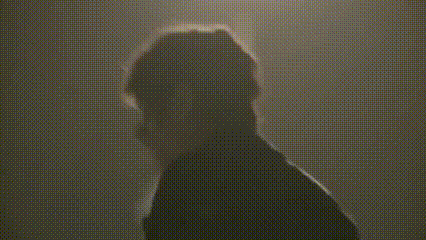
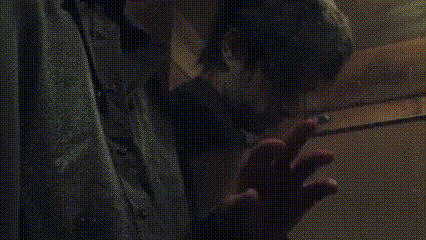



𝗡𝗼𝘃𝗶𝗰𝗮 𝗠𝗮𝗿𝗷𝗮𝗻𝗼𝘃𝗶𝗰 - ˢᵏⁱⁿⁿⁱⁿᵍ ²⁰¹⁰
#novicamarjanovic#skinning#sisanje#skinning2010#skinhead#sisanje2010#sejtanovratnik#shaitanswarrior#novica#marjanovic#novica marjanovic#novica marjanović#skinning 2010#šišanje 2010#šišanje#šejtanov ratnik#sheitan's warrior#deviders#moodboard#aesthetic#stimboard#blood#edgy moodboard
6 notes
·
View notes
Text
Nisam čudan, čudni su mi putevi
Čudna mi je vugla, čudan je način na koji smo uspeli
Bili ste najjači, jeste, ali bili ste I možda bi vas moji poubijali da niste sisice
Ako ne odeš k’o ratnik nisi ni ratovao
Nisi bio u getu ako nisi gladovao
Ja ne znam šta je prestiž ali znam da vas prestižem
I ne znam dal ste vi smešni ili su vam pesme smešnije
Bože zdravlja daj nam još
Ostalo ćemo izgubiti na putu svakako
5 notes
·
View notes




